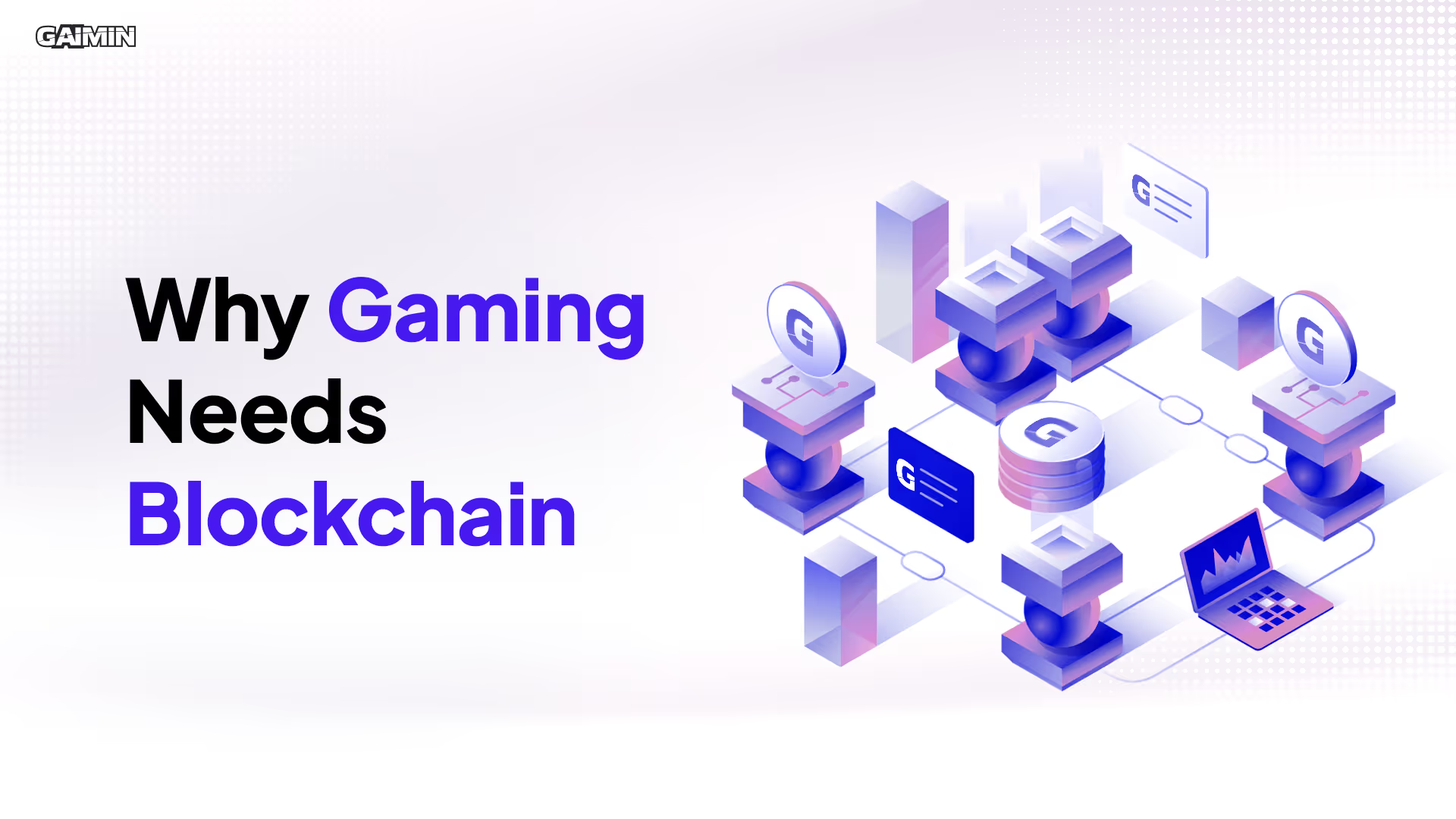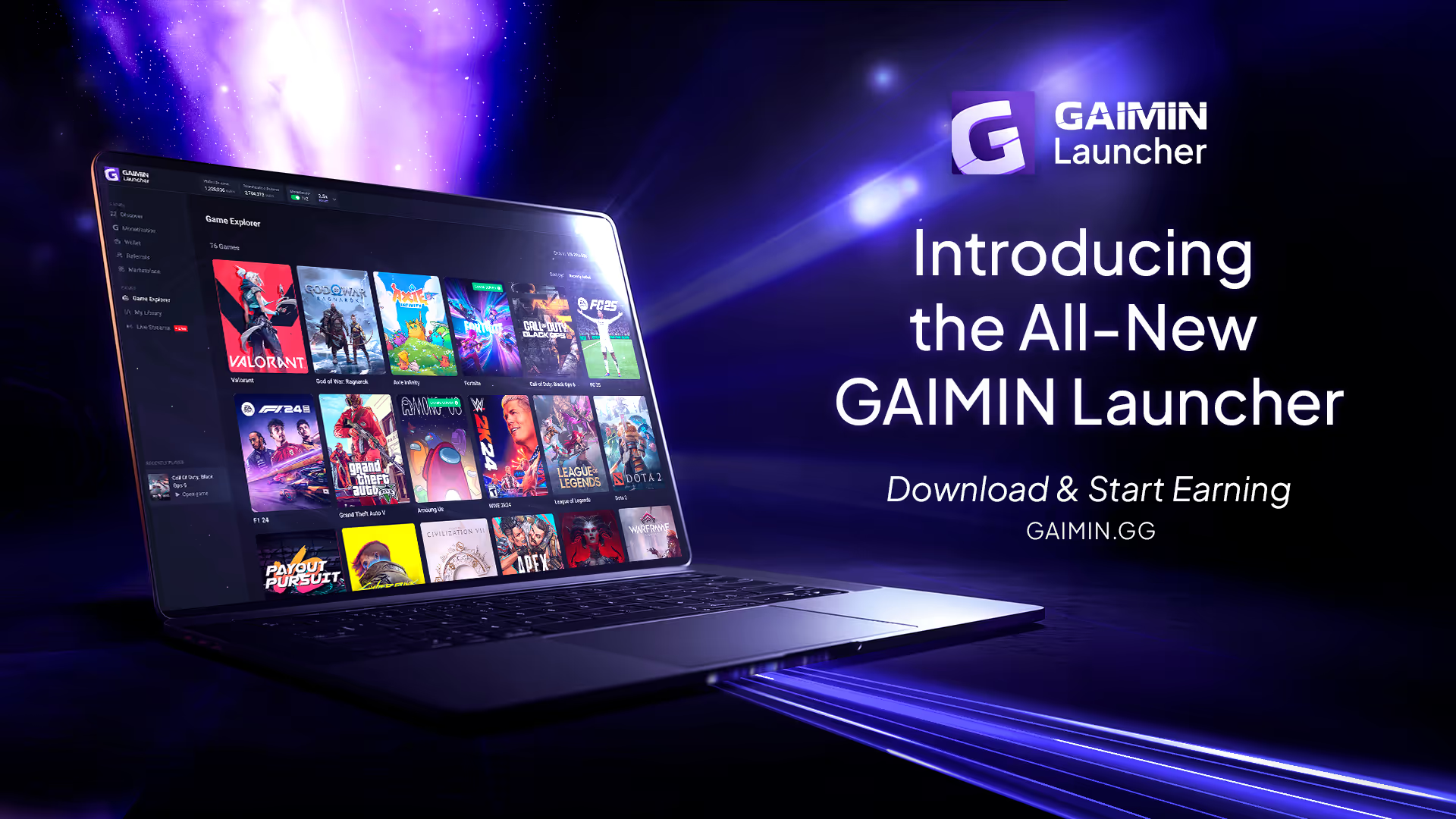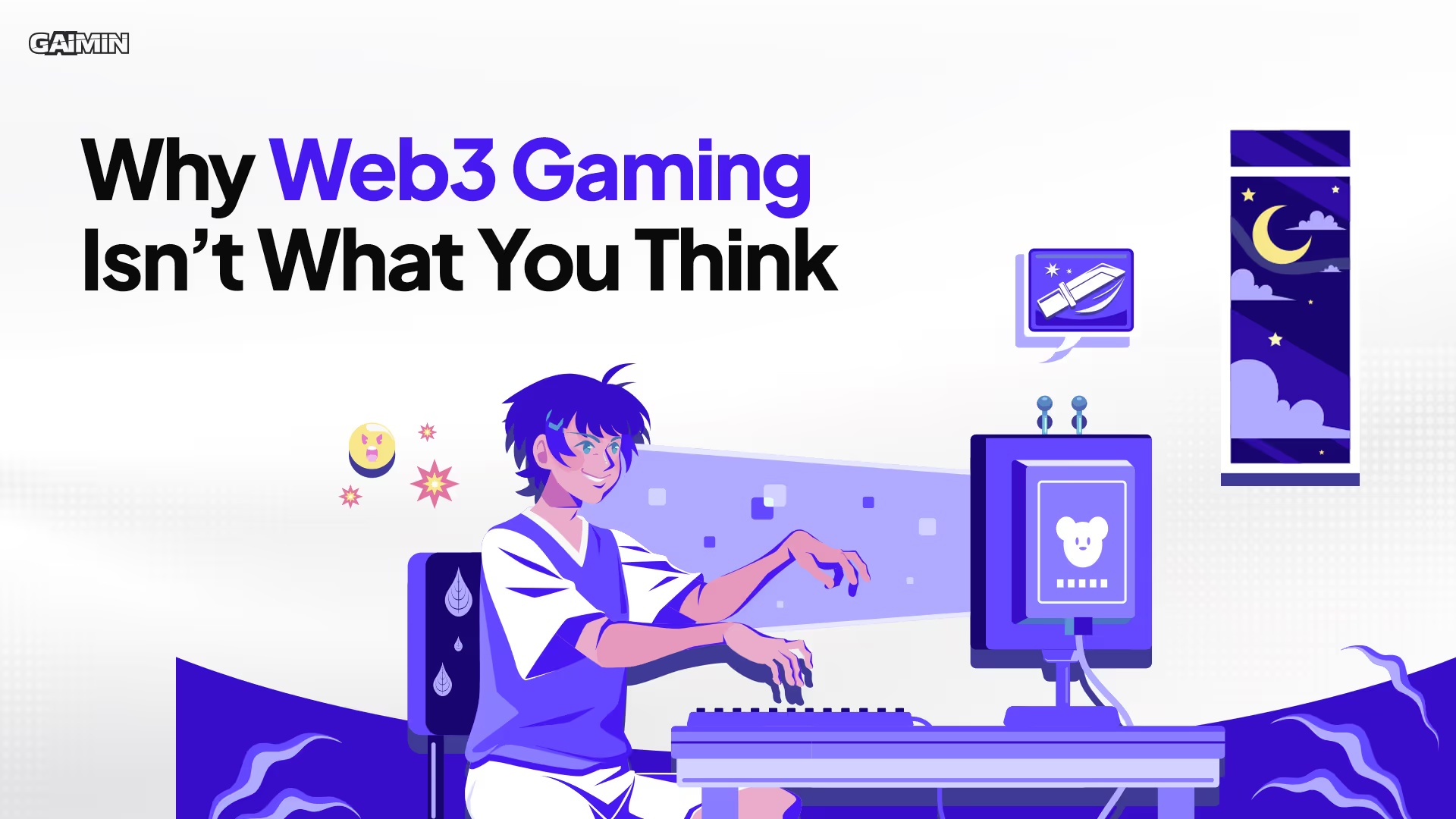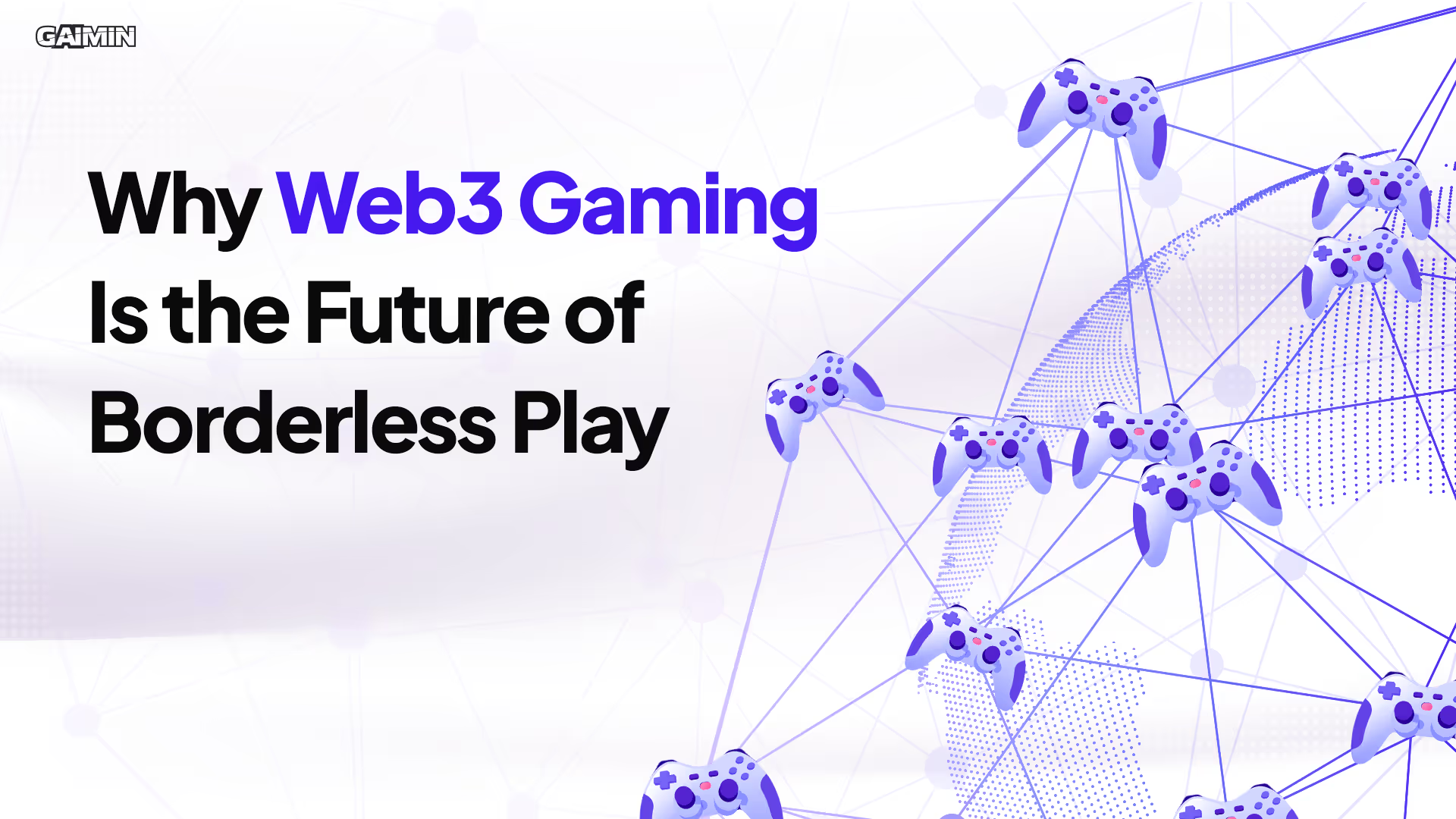
Gaming has always thrived on innovation. From arcades to consoles, cartridges to cloud gaming, the industry continues to evolve at a staggering pace. But while graphics, gameplay mechanics, and networked experiences have advanced dramatically, one element remains outdated: how players own, exchange, and extract value from their passion.
This is where blockchain-backed tokens and digital assets enter the conversation, as a foundational shift in how games are built and experienced.
In an age where players spend billions of dollars on in-game content they don’t truly own or control, blockchain technology offers a new standard for digital value. By enabling real ownership, cross-platform compatibility, and transparent economies, it is fundamentally changing the relationship between players and the games they play. And here at GAIMIN, we practice what we preach.
This article explores why blockchain tokens, both fungible and non-fungible, are not just an expedient feature for the future of gaming but a necessity. And how gaming ecosystems like ours here at GAIMIN are already demonstrating what the future of gaming looks like with blockchain today.
To understand the value of blockchain tokens, we must first understand the gap in today’s gaming industry.
When a player purchases a skin in a popular online shooter or earns a rare weapon through hours of gameplay, those assets remain tethered to that game’s internal database. They cannot be transferred, resold, or independently verified. The player is not an owner; they are a licensee —a rental, as you might call it. Most user agreements explicitly state that the publisher retains full control over all in-game assets.
This creates an enormous imbalance. Players contribute time, skill, and often money to build value within virtual worlds, yet they receive none of the permanence, portability, or economic agency that true ownership implies.
Moreover, developers are increasingly reliant on microtransactions and time-limited rewards to maintain engagement. While effective in the short term, this model can become exploitative and unsustainable. Players are growing more aware of the imbalance, and the demand for a fairer, more equitable, and inclusive model is rising.
Blockchain technology offers exactly that.
Blockchain tokens are data entries on a decentralized ledger. But in practice, they enable a radically different approach to asset management, reward systems, and player relationships.
There are two primary types:
The unique value proposition blockchain technology offers different from traditional in-game assets is mainly in freedom and ownership. Blockchain tokens mostly exist outside of centralized systems. They are controlled by the player’s wallet, not by the game developer. This opens up powerful new use cases:
With NFTs, players can finally own their assets outright. A legendary weapon, a commemorative tournament badge, or a character skin earned through ranked play, these can be minted as tokens on the blockchain and held securely in a player’s wallet. They can be transferred, traded, or showcased in other environments at the will of the owner. Most importantly, they could persist beyond the lifespan of a single game.
This is the foundation of digital property in gaming. No more rented assets. No more value locked inside closed ecosystems—just true asset ownership.
Blockchain protocols can allow assets to be recognized across different games and platforms. A player could use a blockchain token like $GMRX to unlock value in multiple titles. NFTs could be interpreted differently across games, allowing developers to reward loyal users regardless of where they started.
This composability enables entirely new economic models, where value created in one game can travel with the player to the next, creating a persistent digital identity and economy.
Tokens also introduce a better inclusive incentive system. Think about it, what could be the singular currency and payment method that can be accessible to anyone around the globe? That’s the blockchain!
This means a gamer in the US and another in Indonesia can both buy, sell assets, and exchange value in a globally recognized currency—Crypto!
Furthermore, rather than relying solely on purchases, developers can also reward players with tokens for meaningful contributions: completing difficult content, helping others, participating in events, or contributing computing power to the network, just like we do here are GAIMIN.
This aligns the economic interests of players and developers. It provides a middle ground for both sides of the value chain and transforms engagement into a two-way relationship, one where both sides benefit from the success of the game and its community.
While many in the industry are still exploring blockchain as a speculative project or a buzzword-chasing experiment, GAIMIN is building with clear intent. We are building a fully operational ecosystem that puts blockchain tokens at the core of its value proposition to gamers and game developers.
GAIMIN has recognized that blockchain is not just an add-on feature; it is an infrastructure that enables present and future technologies. It is the foundation for digital property, gamer rewards, community engagement, and economic alignment between stakeholders.
Here’s how we have explored blockchain technology in our ecosystem so far:
$GMRX is the fungible token at the heart of GAIMIN’s ecosystem. It acts as the native rewards currency for players who contribute to the network, whether by playing games, sharing computing power, or participating in esports fan engagement campaigns.
Unlike traditional in-game virtual currencies, $GMRX is:
It’s not a mere point coin. It’s a programmable value ‘currency’.
GAIMIN uses NFTs to represent game assets, identity, collectibles, and fan rewards. These are not static JPEGs—they carry utilities, represent status, and access rights. Examples include:
These tokens and assets are then stored and accessed via the GAIMIN Smart Wallet, a gamer-focused digital wallet that makes blockchain seamless and reduces the barrier to entry for the user.
The GAIMIN Smart Wallet is the entry point to Web3 gaming. It’s built within GAIMIN apps in the ecosystem and enables players to access, manage, and transfer tokens (and rewards) with so much ease. Importantly, it removes the complexity of blockchain with a frictionless, gasless user experience.
It’s a tool for claiming digital property, earning rewards, and building a persistent identity across games.
Through The Colosseum on GAIMIN.fan, GAIMIN also brings blockchain to esports fandom. Fans can:
This converts esports fans from spectators into active participants and adds an interactive layer to the esports experience that most Web2 platforms don’t provide.
For game developers, studios, and publishers, blockchain tokens represent an opportunity and a warning. The opportunity is to build better, more engaging games—games with lasting economies, deeper communities, and more resilient monetization strategies. The warning is that players are already waking up to the limitations of current models and are more open now than ever to explore games that are willing to offer “something new”.
Just as cloud gaming, free-to-play models, and streaming reshaped the industry, tokenized ownership is poised to do the same. It’s not a matter of if, it’s a matter of when.
Players are demanding more value from their time. They want assets they can own, sell, and carry with them. They want games that reward participation, not just purchases. The tools are available. The infrastructure is live. Now, the industry must catch up.
If you are a game developer, visit our Game Developer Portal or contact our team at sales@gaimin.io to discover how GAIMIN can help you integrate Web3 and blockchain tech features into your game.
If you are a gamer looking to explore something new in gaming today, an actual rewarding experience for your gaming, download the GAIMIN app now. Explore where gaming is headed and gain the first mover’s experience today!
The new era of gaming is fast approaching.
Will you explore or be left behind?


